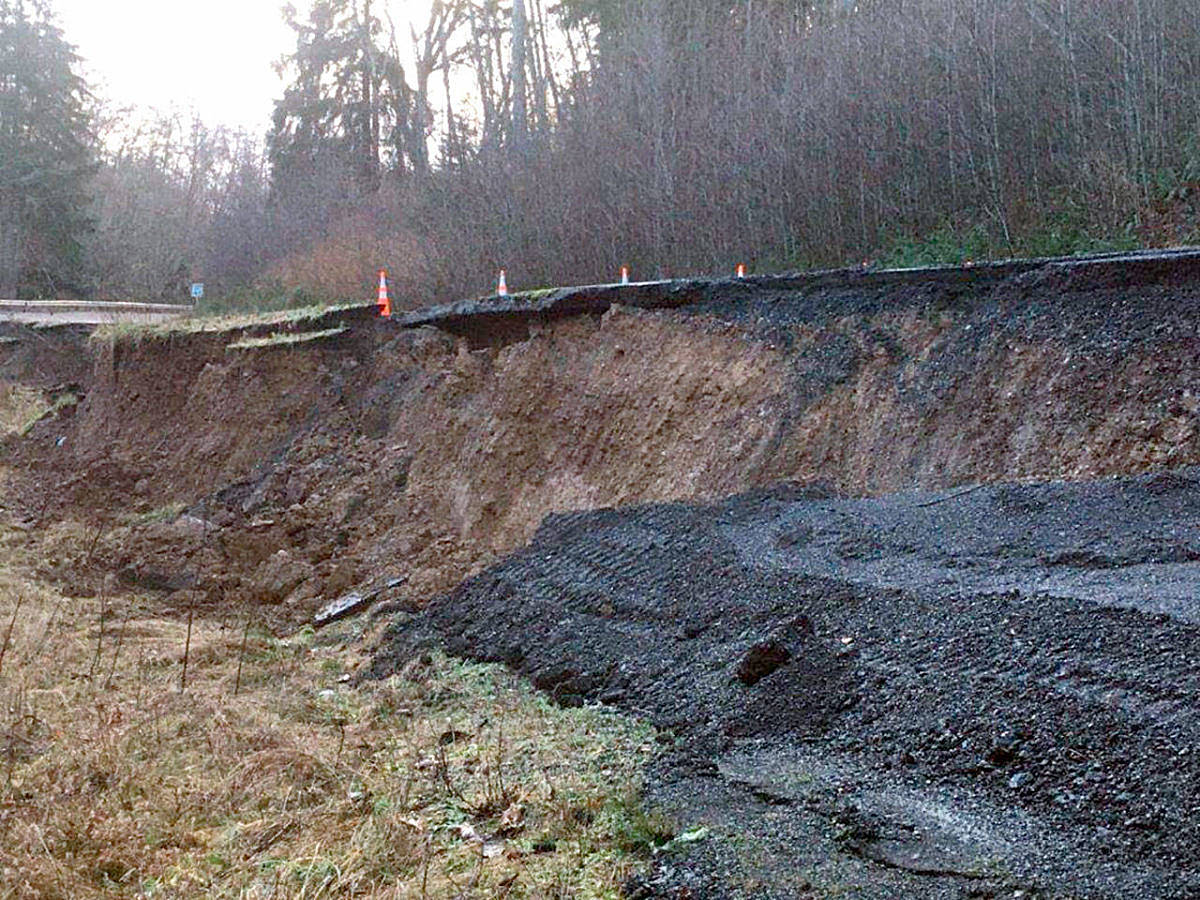Stretch of road between Joyce, Clallam Bay could fully reopen by fall
By Paul Gottlieb
Olympic Peninsula News Group
An 8-mile stretch of State Highway 112 between Port Angeles and the West End has been inaccessible to traffic since Dec. 21, when a half-dozen slides caused by heavy rains cratered the roadbed, sloughing it into pits 13 feet deep.
The remote, scenic thoroughfare could be fully open by this fall with a $2 million project that will take into account of potential marbled murrelet habitat by not allowing construction during nighttime hours, state Department of Transportation Project Engineer Dan McKernan said Friday.
Work that could begin this summer if permits are approved will include slope reinforcement, filling portions with gravel, installing guardrail, rebuilding drainage facilities, and leveling a surface roadway with gravel, state Department of Transportation spokesperson Tina Werner said last seek in an emailed community update on the project.
McKernan said realigning the road would be a more long-term but far more expensive option in a slide-prone region of Clallam County where slides close roads on an annual basis, disrupting traffic on one of the county’s few through roads.
“It’s such a large slide complex,” he said of the slide area.
“It’s not just on the surface.”
But the goal is to return residents to their driving routines.
“This project is to get the road open as quickly as possible and open it to two lanes of traffic,” McKernan said.
“I don’t want to say it’s a short-term fix.
“There are ways that geotechnical engineers can design something that would hold up longer, but it’s not in the scope of this project to get the road open as quickly.
“Those fixes would also require additional right of way to build those fixes. What DOT is staying with is the existing right of way.”
The formula that DOT employs for projects leaves rural, less-traveled areas in the state on the short end of funding compared with more populated areas.
“When the department prioritizes projects, they look at traffic volumes as a deciding factor in the funding of those priorities,” McKernan said.
“Traffic volumes there are not as high compared to Highway 18 or Highway 16 or other stretches of Highway 101.”
Realigning the road would bypass the slide-susceptible areas but cost tens of millions of dollars, he added.
“Nothing would prioritize that any time soon to bypass those areas, which is probably not in the cards,” McKernan said.
The project stretches from near a U-shaped, hairpin turn at Jim Creek east of Clallam Bay to near Twin Beach west of Joyce.
A detour that loops around the slide area will remain in place for the duration of the project.
For westbound drivers heading toward Clallam Bay, it begins near Highway 112-U.S. Highway 101 junction west of Port Angeles.
It courses west on 101, connecting to State Route 113 at Sappho before pointing north and splicing into 112 west of the slide area and to Clallam Bay.
Six slides have been identified in the project area. A design engineer finalized conceptual plans to repair all six locations that will be forwarded to a contractor pending the acquisition of environmental permits that can take up to five months for approval.
“However, we are trying to expedite this process,” Werner said in the update.
Three weeks ago, environmental crews identified potential marbled murrelet habitat that could be affected, but only if construction occurs during nighttime hours when the seabirds are present, McKernan said Friday.
“They come in off the ocean, come and roost and nest in the evening and overnight in the woods,” McKernan said.
During construction, workers would stop operating noise-generating equipment from a half-hour before sunset to a half-hour after sunrise, he said.
“We would not work at night normally because there’s not a lot of traffic that would impact the project,” McKernan said.
He said he did not yet know the location of the habitat areas.
The female murrelet lays one egg a year, according to the U.S. Fish and Wildlife Service. It is incubated for about 30 days by both adults in small depressions or cup-shaped mats made in moss or other debris on a limb. Chicks fledge after about 28 days.
Senior Staff Writer Paul Gottlieb can be reached at 360-452-2345, ext. 55650, or at pgottlieb@peninsuladailynews.com.



